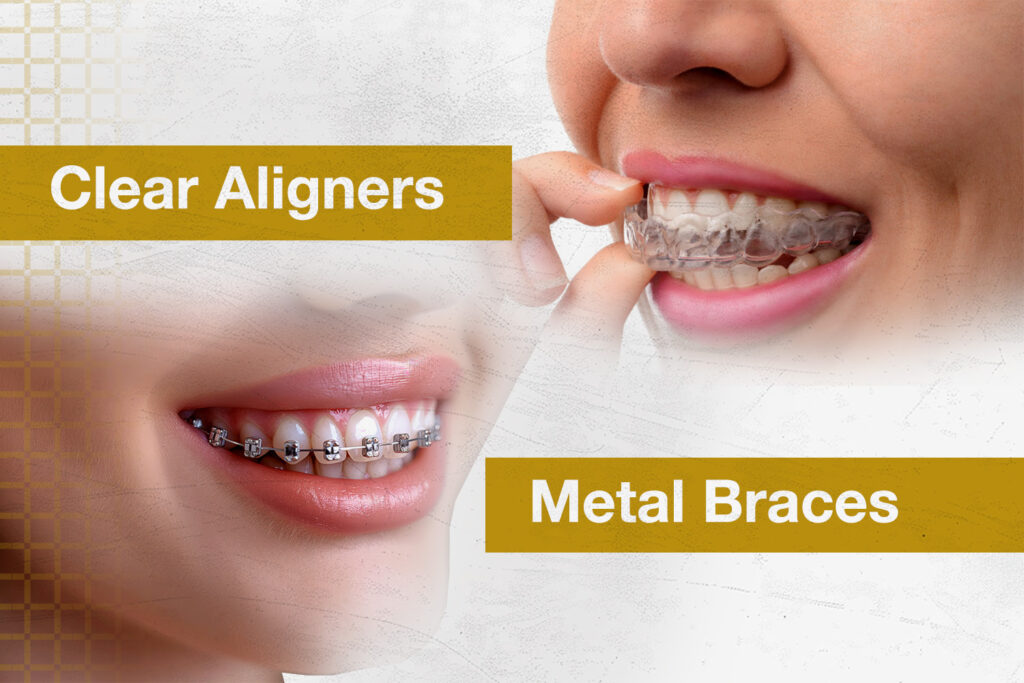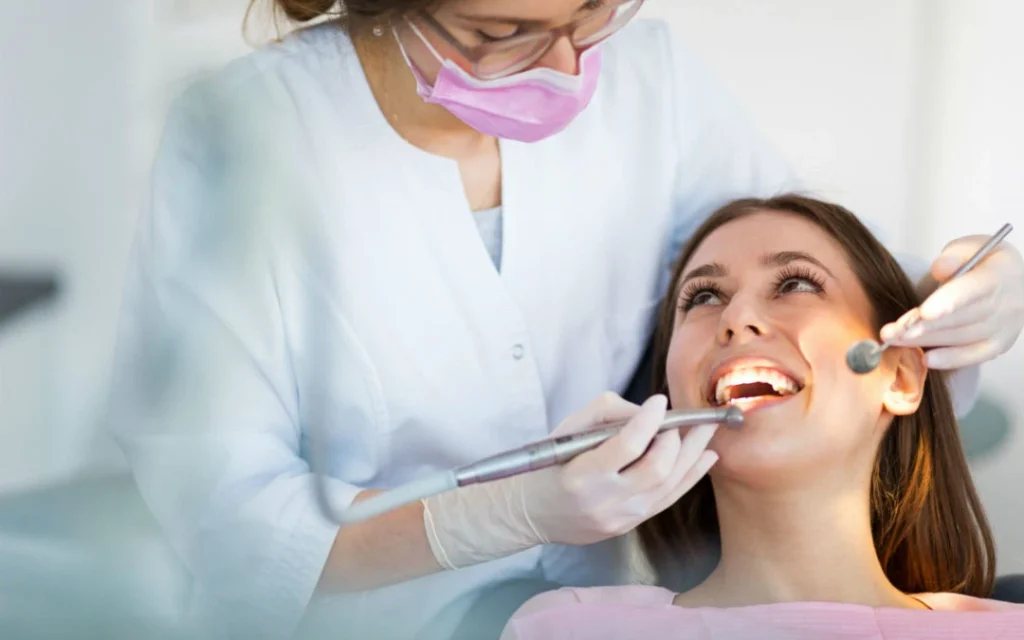Crooked, gapped, rotated, or crowded teeth can lead to various dental issues, affecting how youchew, speak, and even breathe.
They can also impact yourconfidence and increase the risk of gum disease and cavities. Butthere’s a solution: braces.
Braces come in different types, from traditional metal braces to modern clear aligners.
While both work by applying gentle, constant pressure to gradually shiftyour teeth into place,the way they do this and their impact on your daily life differ significantly.
Here’s an overview to help you decide which option is best for you.

What Are Traditional Metal Braces?
Traditional metal braces are made of stainless-steel bands, brackets, and wires that graduallymove teeth over time.Brackets are affixed to each tooth, and flexible archwires are placed over them, secured withtiny elastics bands to keep the wire firmly in place.
Advantages of Traditional Metal Braces:
- Highly effective for complex cases: Metal braces are durable and ideal for addressing significant dental irregularities which makes it the ideal option for complex teeth issues.
- Cost - efficient: Traditional braces are typically more affordable than clear aligners, making them a good choice for many patients.
- Comprehensive treatment: Metal braces can address misaligned teeth at various heights and are effective for a wide range of orthodontic needs.
Disadvantages of Traditional Metal Braces:
- Visibility: Met al braces are noticeable when you smile. Even with colored options, they remain visible.
- Extra care needed: Cleaning around braces requires daily care to prevent cavities and gum issues.
- Frequent visits: Adjustments are required regularly to tighten the wi res, so you’ll need routine appointments with your dentist.

What Are Clear Aligners?
Clear aligners offer a wire-free, removable alternative. Often called “invisible braces,” they use aseries of plastic trays to gradually align teeth.
Each set is wornfor about two weeks before being replaced, though you must wear them for 20-22 hours daily for best results.Only removable for eating, drinking, and brushing.
Advantages of Clear Aligners:
- Nearly invisible: Clear aligners are discreet, ideal for those wh o prefer a low - visibility option.
- Easily removable: ou can remove them for eating, brushing, and drinking, making dental hygiene more manageable.
- Comfortable: The smooth design fits comfortably in the mouth, without the wires or edges of traditional brace s that can makes it uncomfortable.
- Convenient appointments: Unlike metal braces, clear aligners require shorter, less frequent visits since each set is custom - made.
Disadvantages of Clear Aligners:
- Daily wear commitment: Clear aligners need to be worn for 20 - 22 hours daily for effective results.
- Temporary speech adjustments: Some may experience minor speech issues when they first start wearing aligners, though this usually resolves within a few days.
- Limited suitability for complex cases: Severe malocclusio ns might require traditional braces instead, since the clear aligners are weaker than the metal one.
- Careful handling required:Aligners need careful removal and placement to avoid disrupting the treatment.
- Cost:Clear aligners are generally more expensive than traditional braces.

How to Choose Between Traditional Metal Braces and Clear Aligners
Choosing between aligners or braces can impact your daily routine and confidence.
Traditional metal braces are visible but effective, while clear aligners are discreet and allowmore freedom.
- Visibility: If you value discretion, clear aligners might be preferable since they blend with your teeth and are hardly noticeable.
- Lifestyle: Aligners are ideal for active lifestyles, especially if you play musical instruments or contact sports. Their removability can also be helpful for social and professional settings.
- Convenience in Cleaning: Clear aligners allow you to maintain oral hygiene without altering your brushing or flossing habits, unlike braces which require special care.

Hygiene Aspects of Aligners and Braces
-
- Traditional Braces : Brushing and flossing around braces can be tricky and may require special brushes or techniques to keep teeth clean and avoid dental issues.
- Clear Aligners : Since aligners are removable, you can brush and floss normally, making them convenient for maintaining excellent oral hygiene throughout treatment.
Appearance and Comfort of Treatment
- Metal Braces : Metal brackets and wirescan feel bulky in the mouth, and you mayexperience some pressure after each adjustment.
- Clear Aligners : The sleek design of aligners provides a snug fit, making them morecomfortable for many people.
Can I Eat While Wearing Clear Aligners?
Clear aligners should be removed before eating.
This flexibility means you don’t have to avoid sticky or hard foods that might damage braces.However, those with metal braces should be cautious with what they eat to avoid damaging theappliance
Conclusion
- Whether youchoose metal braces or clear aligners, the right option will help you achieve abeautiful, healthy smile.
- Consult your dentist to determine which option best meets your needs and lifestyle.
- In the end, the choice between metal braces and clear aligners depends on your needs,lifestyle, and preferences.
- Both options can lead to a healthier, more confident smile, so consider what fits best with yourroutine, budget, and aesthetic priorities.
Why Brightway Clinics?
At Brightway Clinics, Our dentists have extensive expertise in both metal and clear aligners, ensuring you receive the best guidance for your smile transformation.
start your journey to the smile of your dreams today.


